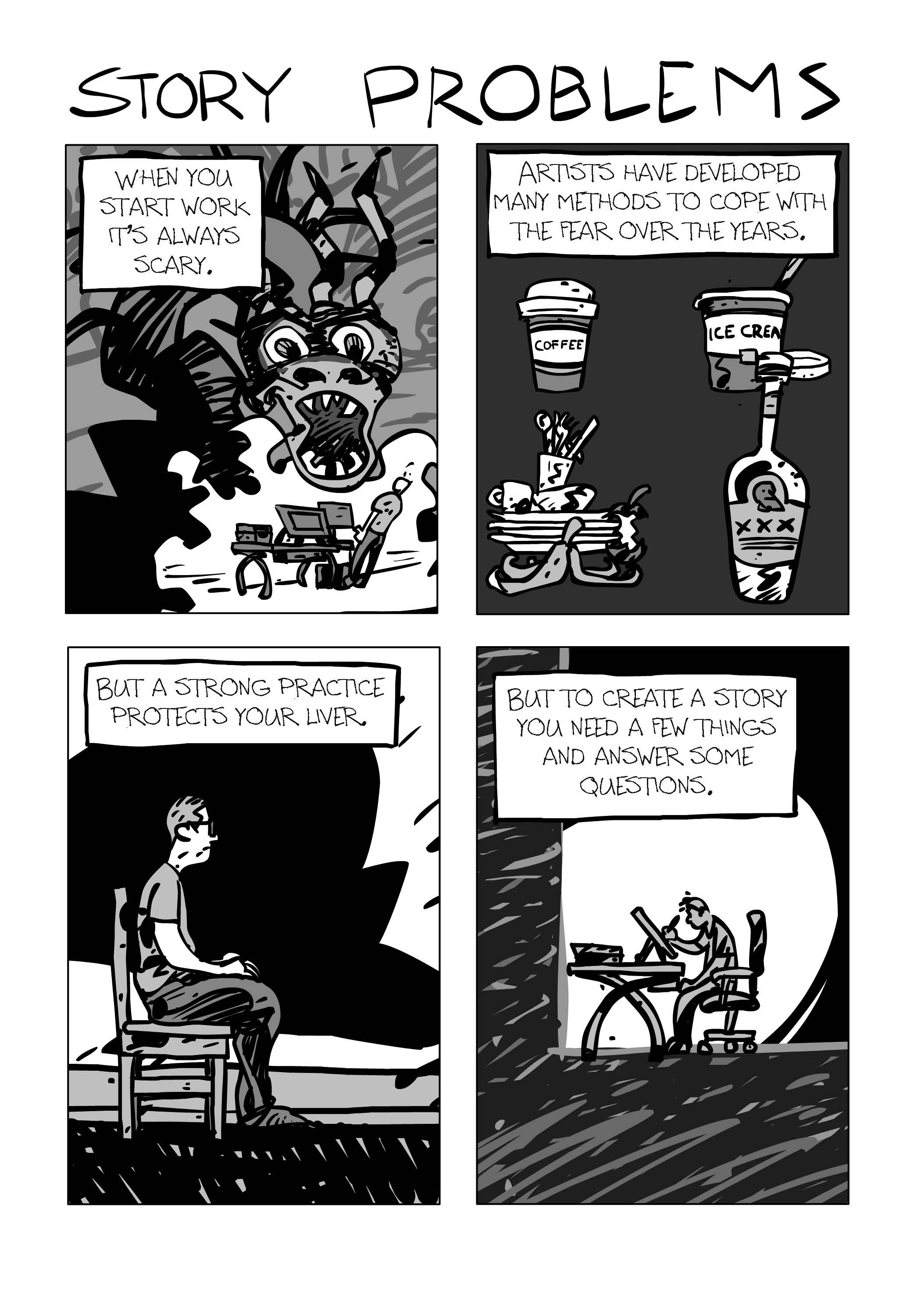The Cartoon Art Museum asked me to teach a class in comics for adults. Seeing a student’s brain light up as they grasp knowledge they never thought they could master, is rewarding. So of course I said yes.
I had fifty years of obsessing about comics to compress into five weeks. I was going to stuff it all into their heads. I broke the classes down into Structure, Plot ,Pattern Languages, Light and Time and Color.
Structure started with the line of action with Preston Blair to make stick figures, the three act discipline of Calvin and Hobbes and Mutts, and drew Steph Curry comic strips. For plot, after building stick figures into three dimensional form, we created stories using Joseph Campbell’s heroic Journey for prompts. In Patterns languages, or how to swipe thoughtfully, we looked at more Mutts, David Mazzucchelli, and Alberto Breccia stories. Light and time introduced the students Sickles, Caniff, Krigstein, and Alex Toth. Finally, we traced color from Rembrandt’s shadows through Monet’s wild swirls to Joseph Albers systematic exploration of color’s power.
The Comics fell out of their other ear!
Talking about important comics is fun for me. I’ve developed enough jokes in teaching programming that I do it with comics too. Show students great work. Point out what makes it great. Do a simple practice exercise in class breaking down the steps. It will be a brilliant class! But the adults couldn’t integrate it all into doing their own work. Obviously, it was all the students’ fault.
The answer was right in front of you Blockhead!
Probably the most important thing I was trying to do in the class was to integrate a meditation practice into my teaching. I made them meditate a few times. I talked about practice, not just of meditation but of anything. I even did the rap of a daily practice to pay attention to your breath can make you happier. I explained how myelin, the insulation on nerves,is generated by repeated practice. In doing repeated practice of a skill you generate more and more myelin to make your body literally work faster.
But teaching isn’t just showing students great work and then describing what makes it great. Working Artists develop steps in their work into a daily practice. That may be the difference between a student and a working artist. Working artists do the steps every day. Paying attention to each step as they work.
Students don’t know what the steps are. Students can’t develop steps out of other people’s work.
Students need the direct practice laid out for them. It’s actually hard to pay attention to something that seems simple like your breath.
What I wish I had done
I should have assigned ten minutes of work a day.
2 minutes should have been spent on meditation to develop their attention.
8 minutes should have repeating one exercise, each day for the week.
Then for the weekend they could spend a half hour to three working on their stories.
Students don’t have the practice of developing projects for themselves and need specific instructions.


